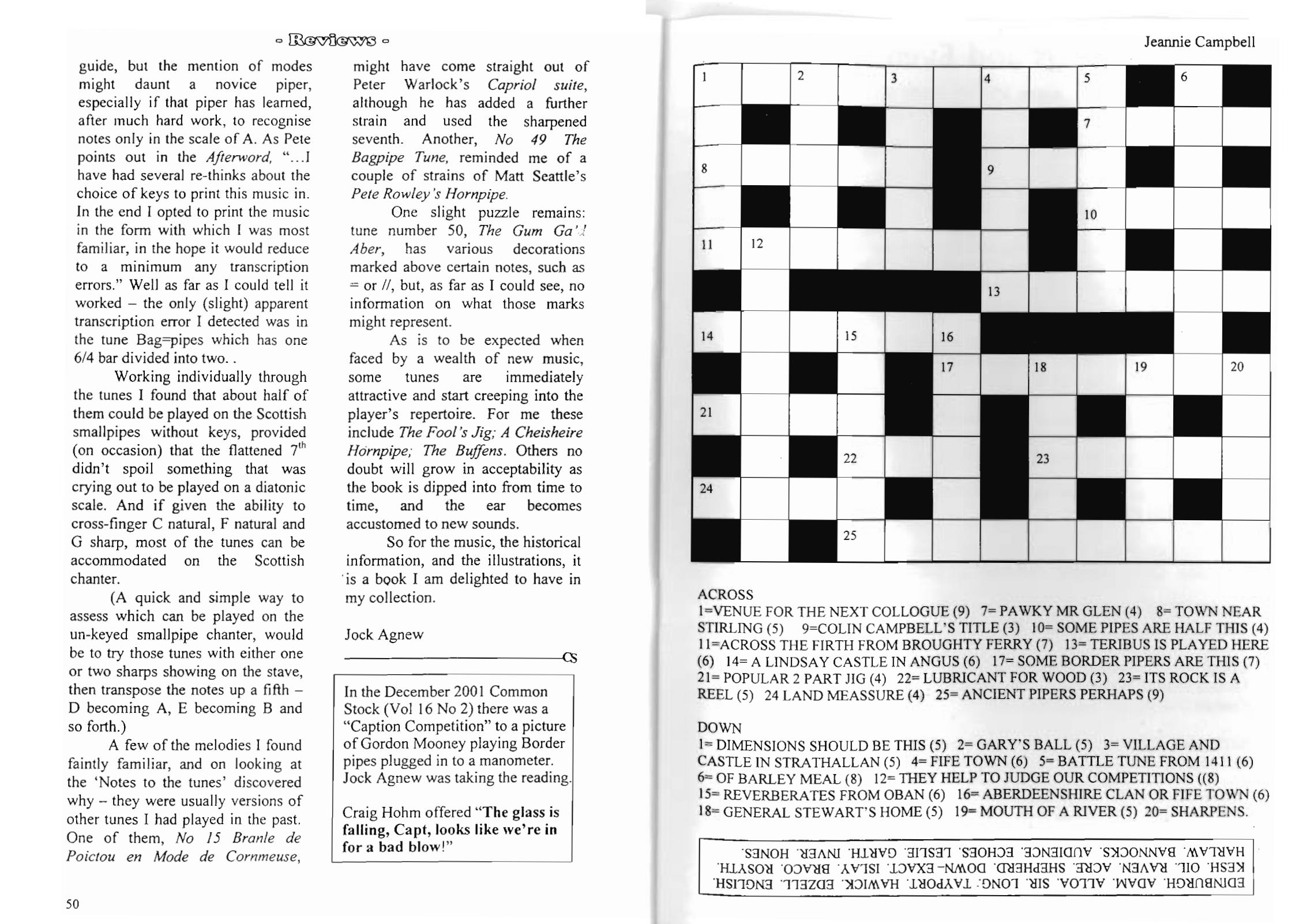Review: Book Robin with the Bagpipe


ROBIN WITH THE BAGPIPE The English Bagpipe and its Music
ISBN 0 90 7772 52 8
Compiled by Pete Stewart
Published by White House Tune Books March 2002 Price £13.00 from Julian Goodacre,
4 Elcho St, Peebles EH45 8LQ
I start by falling into the well-baited trap of copying from the publicity blurb that came with the review copy. “Chaucer’s bagpiping Miller in the Canterbury tales (featured on the front cover), the plays of Shakespeare and Ben Johnson and the engravings of Hogarth all attest to a vigorous tradition of piping throughout England from the 14th to the 18th centuries.” And to emphasise all this the front cover has a stick-on label declaring “The English Bag- pipe and its Music”. I’m always slightly suspicious when I meet a stick-on label: is it an afterthought, or does it hide something sinister?!
There is nothing sinister about the contents, though. Seventy tunes drawn from many sources and representing music from the 13th century onwards, with historical text and 15 pictures all of which add to the interest of the subject in hand - bagpipe music. There are also notes on the tunes, text and illustrations.
Printed on A4 sized paper, my copy had a couple of lines left by paste-ins, and on two of the pages the printing ink had smeared. These did not prevent me from reading the tunes, of course, but they detracted from the book’s otherwise professional appearance.
Pete, who plays with the Goodacre Brothers band, has taken a lot of trouble to give, in the index, the mode of each tune (though I found myself disagreeing with one or two of these):- Mixolydian (Scottish, flat 7th), Dorian (flat 3rds), and Aeolian (flat 3rds and 6ths). This is intended as a helpful guide, but the mention of modes might daunt a novice piper, especially if that piper has learned, after much hard work, to recognise notes only in the scale of A.
As Pete points out in the Afterword, “...I have had several re-thinks about the choice of keys to print this music in. In the end I opted to print the music in the form with which I was most familiar, in the hope it would reduce to a minimum any transcription errors.” Well as far as I could tell it worked - the only (slight) apparent transcription error I detected was in the tune Bag=pipes which has one 6/4 bar divided into two..
Working individually through the tunes I found that about half of them could be played on the Scottish smallpipes without keys, provided (on occasion) that the flattened 7th didn’t spoil something that was crying out to be played on a diatonic scale. And if given the ability to cross-finger C natural, F natural and G sharp, most of the tunes can be accommodated on the Scottish chanter.
(A quick and simple way to assess which can be played on the un-keyed smallpipe chanter, would be to try those tunes with either one or two sharps showing on the stave, then transpose the notes up a fifth - D becoming A, E becoming B and so forth.)
A few of the melodies I found faintly familiar, and on looking at the ‘Notes to the tunes’ discovered why - they were usually versions of other tunes I had played in the past. One of them, No 15 Branle de Poictou en Mode de Cornmeuse, might have come straight out of Peter Warlock’s Capriol suite, although he has added a further strain and used the sharpened seventh. Another, No 49 The Bagpipe Tune, reminded me of a couple of strains of Matt Seattle’s Pete Rowley’s Hornpipe.
One slight puzzle remains: tune number 50, The Gum Ga’l Aber, has various decorations marked above certain notes, such as = or //, but, as far as I could see, no information on what those marks might represent. As is to be expected when faced by a wealth of new music, some tunes are immediately attractive and start creeping into the player’s repertoire.
For me these include The Fool’s Jig; A Cheisheire Hornpipe; The Buffens. Others no doubt will grow in acceptability as the book is dipped into from time to time, and the ear becomes accustomed to new sounds. So for the music, the historical information, and the illustrations, it is a book I am delighted to have in my collection.
Jock Agnew
